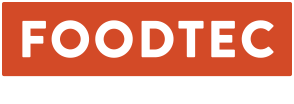Nowadays people barely have any time for their daily routines and always look for instant solutions at their doorstep at reasonable prices. With online ordering, there’s no longer any need to browse a menu or phone a restaurant to make an order: you can just open an app, browse the selection of items on offer, and pay. But while digital makes our lives easier, faster, and hassle-free, customers also now have high expectations when it comes to the food delivery. As a result, tracking is fast becoming one of the restaurant industry’s latest forays into high-profile technologies as a crucial element in food delivery.
Customers today want to know when they should expect their food to arrive without needing to call a number or depend on rough estimations. As a customer, it provides a certainty and provides the perception that the customer’s order is being taken care of with utmost priority. With GPS tracking in place not only are the customers kept informed of their meal’s delivery time but it also allows the business itself to monitor its delivery performance.
With demand from consumers growing and competition with third-party delivery providers on a constant upward trend, it’s no surprise to hear that a quarter of all Domino pizza chain restaurants put GPS delivery technology in place last year, with many of its remaining locations to update their systems this year. As you would expect, Domino’s tracking tool enables its customers to track their delivery status in real time through the company’s smartphone app, giving them a better idea of when to expect their pizza. The basic idea behind such features is straightforward: give customers up-to-the-minute visibility into the status of their orders, and they’ll be more satisfied and loyal to the brand. And it seems to be working. Areas where Dominos introduced the tracking system saw an increase of 20% to 40% in its sales; customer retention and loyalty saw an upward spike with time; and after experiencing higher profitability through this system increased its investment in technology and now customers can even check the status of their delivery on their smart TVs.
The technology is also not just for the benefit of the customer. The company said the technology gives store managers more information, enabling them to better manage deliveries and make the process more efficient. “Customers are not the only ones who love the technology,” Dennis Maloney, Domino’s chief digital officer. “Store managers and delivery experts do as well because of the transparency it provides and how it improves the delivery experience for everyone.”
So, while one of the main benefits of tracking allows brands to offer the best experience to their customers, GPS tracking also offers additional tangible benefits to a business. Integrating GPS tracking enables a business to monitor and track their ability to deliver takeaway orders effectively and efficiently. Brands can monitor their drivers’ patterns, their choice of routes, and their speeds to avoid costly mistakes. By utilizing vehicle tracking, businesses can gain complete control over their operations, significantly reduce costs and also improve productivity.
With the increasing number of players in the food industry companies are constantly looking for ways to reduce costs and increase customer satisfaction as a way to gain a competitive edge. One way restaurants can achieve those goals is by leveraging the power of real-time tracking apps which can help monitor and track their ability to deliver takeaway orders in a timely fashion. By integrating the GPS tracking technology into their everyday operations, businesses can boost productivity and minimizing the risk of wasted money while simultaneously creating more satisfied loyal customers. So, what are you waiting for?



